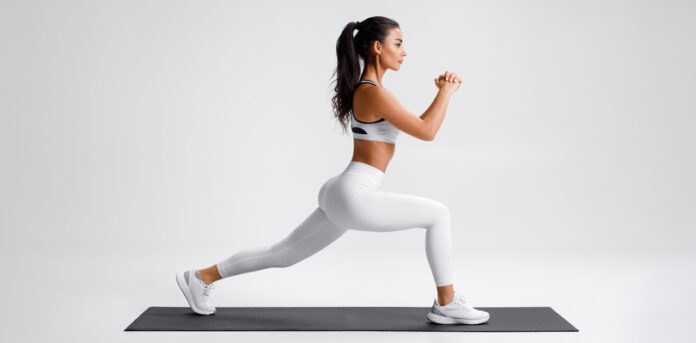Toned and well-defined glutes not only enhance your physical appearance but also indicate a body that is strong, stable, and healthy. The gluteal muscles, which include the gluteus maximus, medius, and minimus, are crucial muscles that contribute to your appearance and overall body strength and functionality. Gaining a sculpted backside requires more than just a few squats. It requires a targeted approach, a thorough understanding of the right exercises, and a commitment to regularity.
Warm-up And Preparation
Before diving into the exercises, it’s necessary to warm up appropriately to improve blood flow, and flexibility, and lower the risk of injuries. Dynamic stretches and light cardio exercises are ideal to train your body for the workout ahead.
Proven Glute Exercises For Beginners
Here are five beginner-friendly glute exercises that can help you maintain and tone your gluteal muscles effectively:
Bodyweight Squats
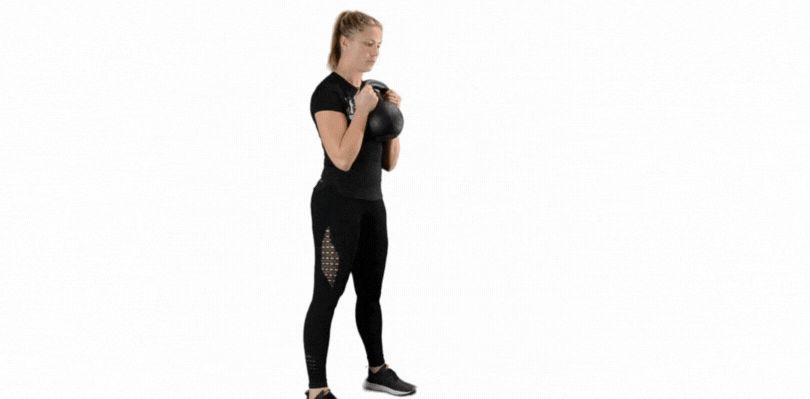
Bodyweight squats are ideal for beginners as they help build strength in the glutes, thighs, and lower back.
How to Do It:
- Stand with your feet shoulder-width apart.
- Lower your body as if you were going to sit down in a chair, keeping your chest up and your back straight.
- Lower yourself until your thighs are parallel to the ground.
- Push through your heels to return to the starting position.
Glute Bridges
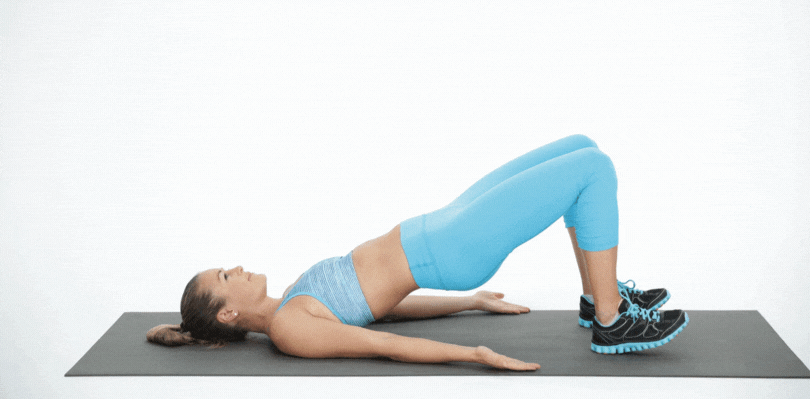
Glute bridges activate and strengthen your glutes and also enhance hip stability.
How to Do It:
- Lie on your back with your knees bent and feet flat on the ground.
- Place your arms at your sides, palms facing down.
- Lift your hips toward the ceiling, squeezing your glutes at the top.
- Hold the position for a moment, then lower your hips back down.
Lunges
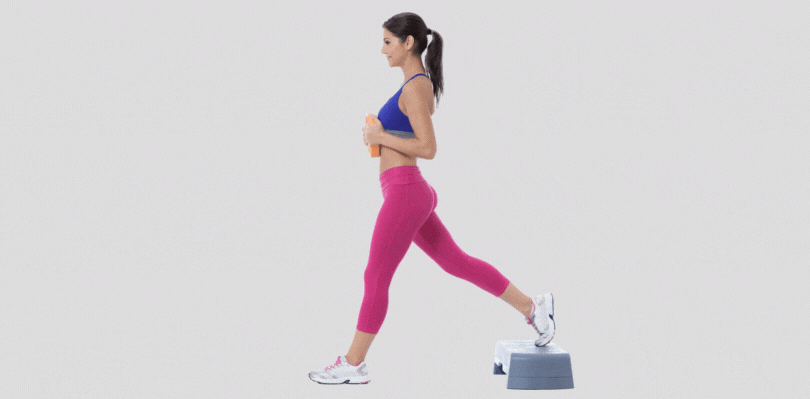
Lunges work the glutes, hamstrings, and quadriceps, allowing them to improve overall lower body strength and balance.
How to Do It:
- Start by standing with your feet together.
- Step forward with your right foot and lower your body until your right thigh is parallel to the ground.
- Push off your right foot to return to the starting position.
- Repeat on the other side.
Step-Ups
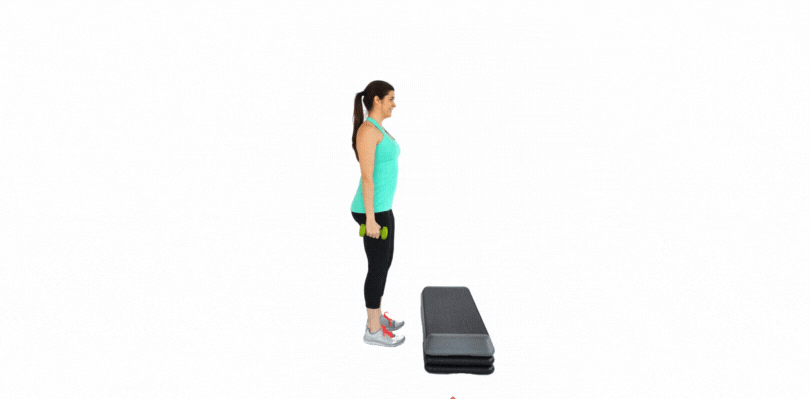
Step-ups target the glutes and quadriceps, improving lower body strength and stability.
How to Do It:
- Find a sturdy bench or step.
- Step onto the bench with your right foot, pressing through your heel.
- Bring your left foot up beside your right foot.
- Step back down with your left foot followed by your right foot.
Standing Leg Raises
Standing leg raises focus on the gluteus maximus and helps in enhancing muscle steadiness and stability.
How to Do It:
- Stand upright, holding onto a chair or a wall for balance.
- Lift your right leg straight back behind you while keeping your back straight.
- Lower your leg back down without letting it touch the ground.
- Repeat on the other side.
Note: Perform these exercises with proper form and gradually increase the repetitions and sets as your strength improves. Remember to listen to your body and give yourself adequate rest between workouts to allow for recovery and muscle growth.
Intermediate-Level Glute Exercises
Here are intermediate-level glute exercises that provide a bit more challenge and intensity compared to beginner exercises:
Bulgarian Split Squats
Bulgarian split squats target the glutes, quads, and hamstrings while also improving balance and stability.
How to Do It:
- Stand facing away from a bench or elevated surface.
- Extend your right leg behind you and place the top of your foot on the bench.
- Lower your body into a lunge position, keeping your chest up and your back straight.
- Push through your front heel to return to the starting position.
Kettlebell Swings
Kettlebell swings are a powerful glute exercise that also engages the core and improves explosiveness and power.
How to Do It:
- Stand with your feet slightly wider than shoulder-width apart, holding a kettlebell with both hands in front of you.
- Bend your knees slightly and hinge at your hips, swinging the kettlebell back between your legs.
- Explosively drive your hips forward, swinging the kettlebell up to shoulder height.
- Control the kettlebell back down between your legs and repeat.
Single-Leg Romanian Deadlifts
Single-leg Romanian deadlifts strengthen the glutes, hamstrings, and lower back while improving balance and stability.
How to Do It:
- Hold a dumbbell in your right hand, and balance on your left leg.
- Hinge at your hips, lowering your torso while extending your right leg straight back behind you.
- Keep your back straight and lower the dumbbell towards the ground, then return to the starting position.
- Repeat on the other leg.
Note: These intermediate exercises require more strength, balance, and coordination than beginner exercises. Ensure you use proper form and start with a weight or resistance level that challenges you but allows you to maintain the correct technique.
Advanced-Level Glute Exercises
Here are advanced-level glute exercises that will challenge your strength, stability, and endurance:
Barbell Hip Thrusts
Barbell hip thrusts are one of the most effective exercises for isolating and building the glutes, providing intense activation and muscle growth.
How to Do It:
- Sit on the ground with your upper back against a bench, and roll a barbell over your hips.
- Roll the barbell over your hips and position it right above your pelvic area.
- Plant your feet firmly on the ground, slightly wider than shoulder-width apart.
- Brace your core and drive through your heels, lifting your hips towards the ceiling until your body forms a straight line from shoulders to knees.
- Lower your hips back down without touching the ground and repeat.
Pistol Squats
Pistol squats require significant strength and flexibility, engaging the glutes, quads, hamstrings, and calves, while also enhancing balance and stability.
How to Do It:
- Stand on one leg, extending the other leg straight out in front of you.
- Lower your body into a squat position while keeping your extended leg off the ground.
- Balance and control your descent, then push through your heel to return to the starting position.
- Repeat on the other leg.
Cable Kickbacks
Cable kickbacks provide constant tension on the glutes throughout the movement, helping to shape and define the muscles effectively.
How to Do It:
- Attach an ankle strap to the low pulley on a cable machine and strap it to your ankle.
- Face the machine and hold onto the machine for support.
- Kick your strapped leg straight back, engaging your glutes at the top of the movement.
- Lower your leg back down and repeat.
Note: These advanced exercises demand a high level of strength, balance, and coordination. Ensure proper form, start with a suitable weight or resistance level, and gradually increase the intensity as you progress.
FAQs
What’s the best way to target my glutes effectively?
If you want to target your glutes effectively, it’s best to incorporate a mix of compound exercises such as squats, lunges, and deadlifts, along with isolation exercises like glute bridges and hip thrusts. Be sure to use proper form, and gradually increase the intensity and resistance to challenge your muscles for growth.
How often should I train my glutes for optimal results?
For optimal results, it’s recommended to train your glutes 2 to 3 times a week with at least one rest day in between to allow for proper recovery. Overtraining can lead to injuries, so make sure to listen to your body and give it the rest it needs to repair and grow.
Can I sculpt my glutes without using weights or gym equipment?
If you don’t have access to gym equipment, don’t worry. You can still sculpt your glutes using bodyweight exercises such as squats, lunges, glute bridges, and step-ups. Resistance bands can also add intensity to your workouts. Just remember to focus on high reps and proper form to make the most out of bodyweight exercises.

